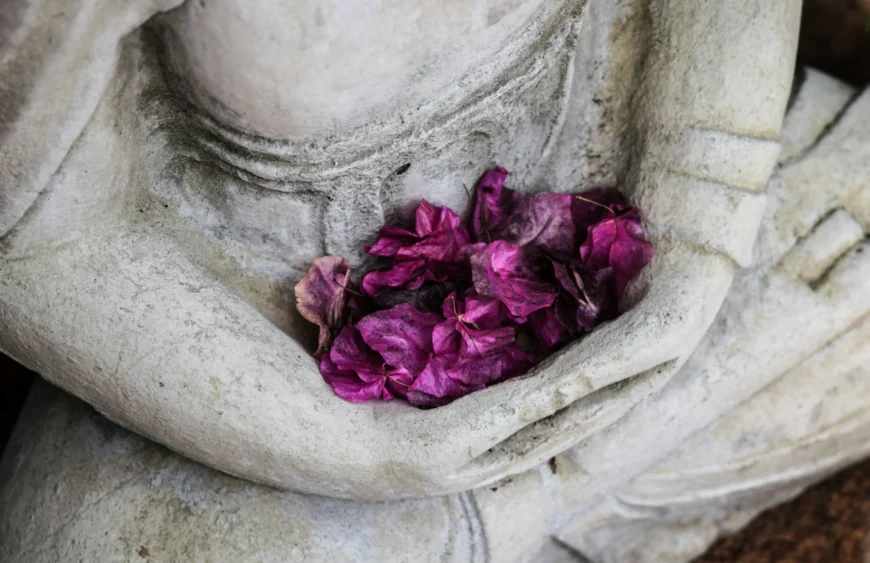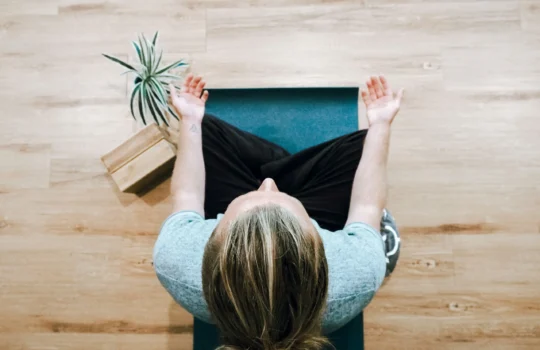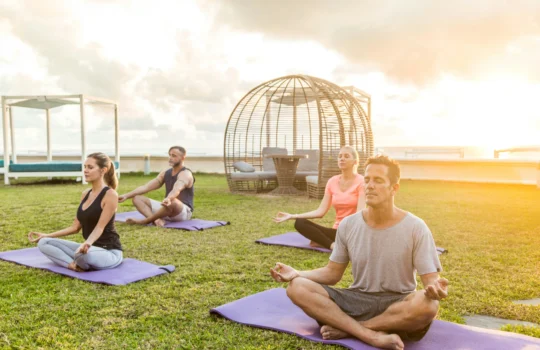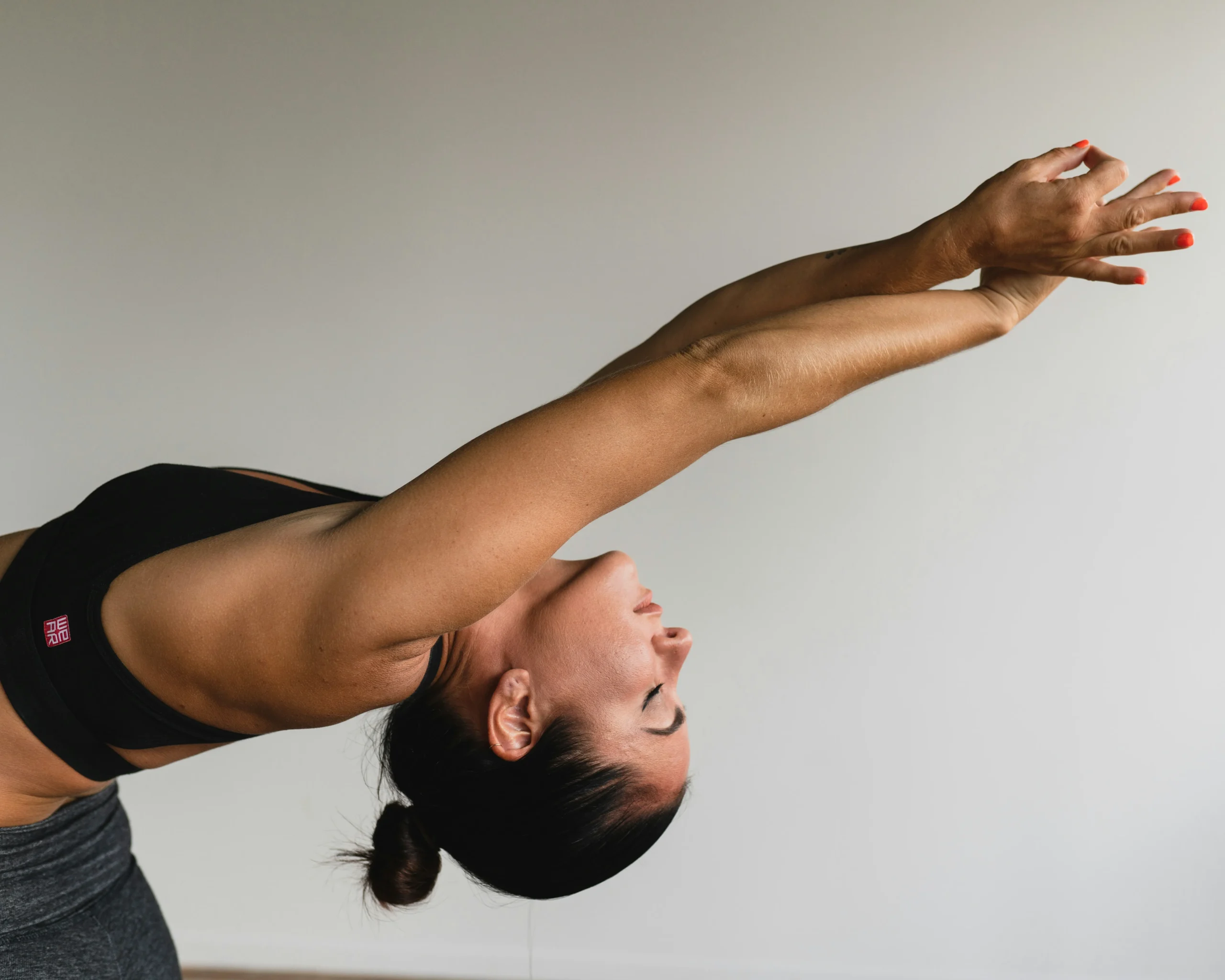Welcome to the vibrant world of Ashtanga Yoga, a practice that transcends mere physical postures to touch the very essence of mindfulness, discipline, and spiritual awakening. If you’ve ever found yourself mesmerized by the graceful flow of Ashtanga practitioners, or if the term “Ashtanga Primary Series” piques your curiosity, you’re about to embark on a transformative journey.
This ancient practice, refined by the legendary Pattabhi Jois, offers a structured pathway to personal growth, physical strength, and inner peace. Whether you’re a seasoned yogi or a beginner eager to lay your mat, understanding the Ashtanga Primary Series is your first step towards a fulfilling yoga practice that extends beyond the mat into daily life. Get ready to discover how this physically demanding practice harmonizes body, breath, and mind, setting the stage for a life of balance and harmony.
Table of Contents
1. Understanding the Foundation of Ashtanga Primary Series
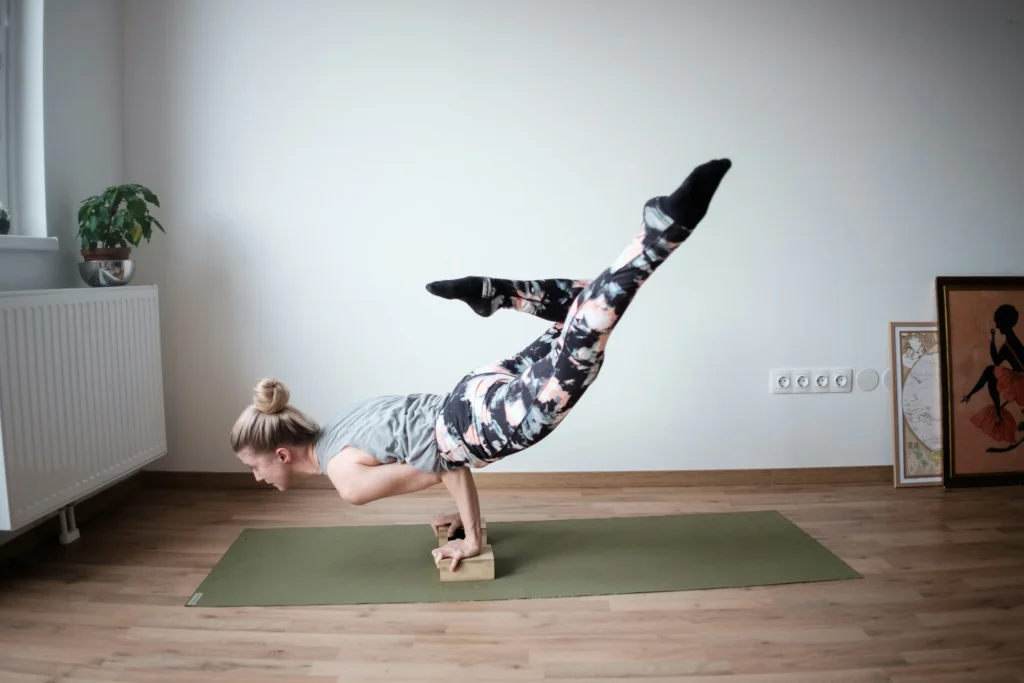
Before you can soar, you need to understand what grounds you. Ashtanga Yoga, a method steeped in ancient wisdom, serves not just as a physical workout but as a ladder to spiritual elevation. Rooted in the Yoga Sutras of Patanjali, Ashtanga introduces practitioners to a disciplined sequence of yoga asanas (poses), breathing techniques (pranayama), and a focus on the eight limbs of yoga, laying a comprehensive foundation for both beginners and advanced yogis alike.
Ashtanga Yoga Practice: More Than Just Poses
Ashtanga Yoga is not merely about achieving the perfect posture; it’s a journey through self-discovery and discipline. “Ashtanga” translates to “eight limbs” in Sanskrit, representing the eight-fold path to enlightenment. This holistic approach ensures that your practice nurtures not just the physical body but also your mental and spiritual health.
The Unique Sequence of Ashtanga Vinyasa Yoga
What sets Ashtanga Vinyasa Yoga apart is its specific sequence of postures, each linked with breath and movement (vinyasa). This meticulous order, designed to purify the body and mind, starts with the Sun Salutations, moves through standing and seated poses, and concludes with a set of finishing sequences. This consistency is key to deepening your practice and achieving the meditative flow that Ashtanga is known for.
The Physical and Mental Benefits
Embracing the Ashtanga Primary Series as a beginner, you’ll quickly notice the physical benefits: improved flexibility, strength, and stamina. But the true magic of Ashtanga lies in its ability to quiet the mind. Through the synchronization of breath and movement, you’ll develop an unparalleled focus, calming the nervous system and leading to a profound sense of inner peace.
Yoga Practice as a Pathway to Personal Growth
Committing to the Ashtanga Yoga Primary Series is more than a daily workout; it’s a commitment to personal growth. Each posture, each breath, is an opportunity to confront your limitations and transcend them. It’s a practice that teaches persistence, patience, and humility, qualities that enrich not just your yoga practice but every aspect of your life.
The Takeaway
The foundation of Ashtanga Yoga lies in its blend of physical rigor and spiritual depth. It’s a practice that invites you to challenge yourself, to explore the edges of your capabilities, and to embrace the journey towards a balanced and enlightened life. Whether you’re stepping onto the mat for the first time or seeking to deepen your practice, remember: Ashtanga Yoga is not just about mastering postures; it’s about mastering yourself.
2. The Role of Yoga Therapy and the Physical Body in Ashtanga
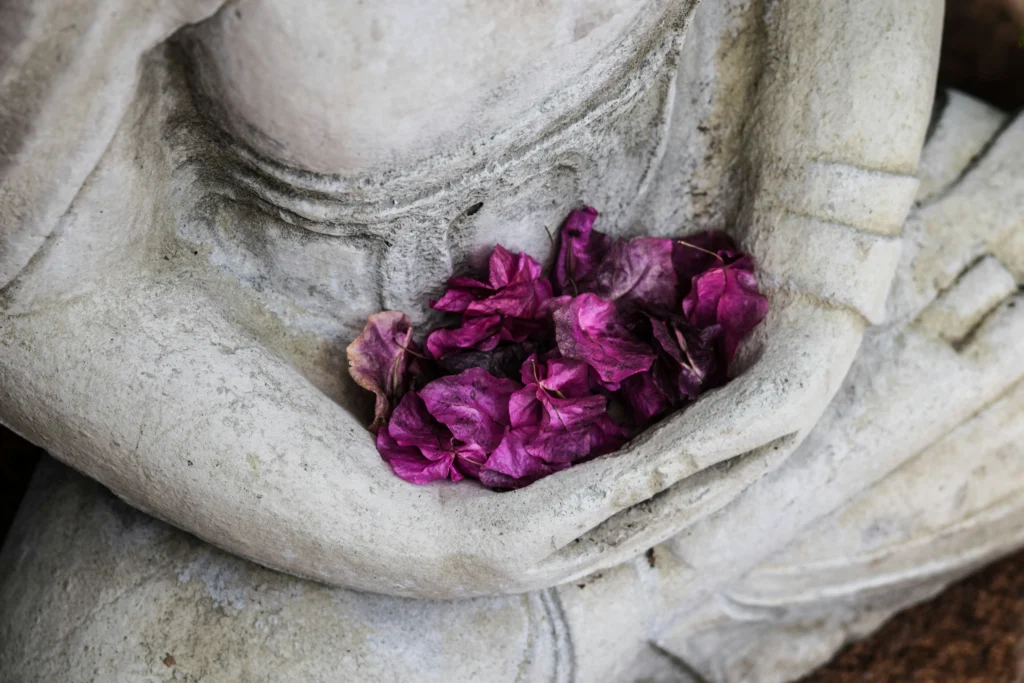
In the realm of Ashtanga Yoga, the synergy between the physical body and the mind is paramount. This practice doesn’t just sculpt the body; it molds the mind, offering a form of yoga therapy that is as rejuvenating for the psyche as it is for the physique. Ashtanga Yoga, especially through its meticulously structured Primary Series, acts as a healing balm, addressing physical ailments and nurturing mental well-being.
Yoga Therapy: Healing from Within
Ashtanga Yoga transcends traditional exercise by functioning as a potent form of yoga therapy. This “therapy” aspect, often referred to as “Yoga Chikitsa” or yoga therapy, aims to purify and heal the body from the inside out. The series of poses are designed not only to strengthen and stretch the body but also to detoxify the organs and calm the nervous system, promoting an overall state of health and balance.
Attuning to the Physical Body
A cornerstone of Ashtanga Yoga is developing a deep, intuitive connection with one’s physical body. This connection encourages a heightened awareness of bodily needs, limits, and potential. As you progress through the Ashtanga Primary Series, you learn to listen to your body, recognizing the difference between good pain that leads to growth and harmful pain that signifies unnecessary strain. This attunement fosters a nurturing attitude towards oneself, paving the way for a practice that is both challenging and sustainable.
3. Diving Deep into the Ashtanga Practice and Yoga Chikitsa
Embarking on the Ashtanga journey is akin to peeling back layers, revealing not just physical strength and flexibility, but also mental resilience and spiritual clarity. The heart of Ashtanga Yoga lies in its capacity to serve as a medium for profound personal transformation through the practice of Yoga Chikitsa.
The Essence of Ashtanga Practice
Ashtanga practice is more than a series of movements; it’s a meditation in motion, a discipline that challenges you to be fully present. This practice encourages consistency and dedication, with each session building upon the last, deepening your connection to yourself and the practice. The repetition of the same sequence allows for a meditative focus, turning the practice into a sanctuary for mindfulness and self-exploration.
Yoga Chikitsa: A Therapeutic Journey
Yoga Chikitsa, or the primary series, is aptly called yoga therapy, designed to purify the body and prepare the mind for deeper yogic practice. This series specifically targets the musculoskeletal system and the digestive system, promoting the flow of energy and aiding in the detoxification process. As you engage with these challenging postures, you’re not just enhancing your physical flexibility and strength; you’re also clearing energetic blockages, facilitating a smoother flow of prana (life energy) throughout the body.
Commitment to Consistent Practice
Key to reaping the benefits of Ashtanga and Yoga Chikitsa is the commitment to practice consistently. Regular engagement with the Ashtanga Primary Series cultivates discipline and perseverance, qualities that extend far beyond the yoga mat. This consistent practice lays the foundation for personal growth, teaching lessons of patience, acceptance, and the art of finding stillness within the storm.
4. Breath Control and Its Paramount Importance
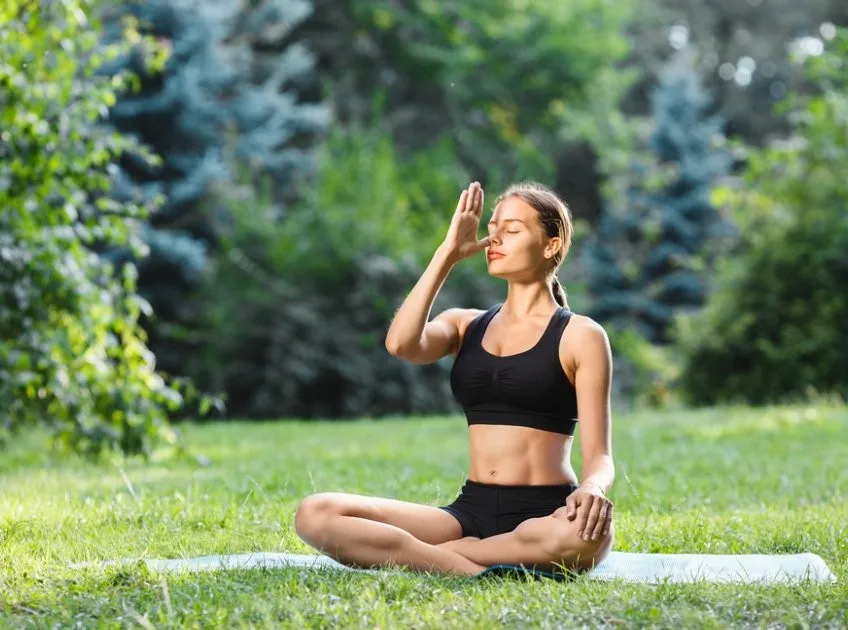
One of the pillars of Ashtanga Yoga is the mastery of breath control, or pranayama. This practice is not just about moving the body into various poses; it’s about how you breathe through these movements. Breath control is the essence of connecting the physical with the mental, turning each asana into a moving meditation.
The Life Force of Ashtanga Practice
In Ashtanga Yoga, breath is considered the life force, or prana, that sustains our physical and mental activities. The specific breathing technique used in Ashtanga, Ujjayi Pranayama, is a method of breath control that helps to concentrate the mind, warm the body, and increase the flow of oxygen. This controlled breathing also supports the development of a physically demanding practice by helping to maintain rhythm and focus during the intense sequences of the Primary Series.
Breath and Movement in Synchronization
The synchronization of breath and movement, or vinyasa, is what makes Ashtanga Yoga unique. Each movement is tied to an inhale or an exhale, creating a flow that is rhythmic and deeply meditative. This breath-synchronized movement enhances physical endurance and mental clarity, teaching practitioners to stay present and mindful in each moment.
5. Mastering the Sequence: From Sun Salutations to Finishing Poses
The Ashtanga Primary Series is a set sequence of postures, starting with Sun Salutations (Surya Namaskara A and B), moving through standing and seated poses, and concluding with a series of finishing poses. Mastering this sequence is a journey of dedication and personal growth.
The Role of Sun Salutations
Sun Salutations serve as the warm-up for the entire practice, preparing the body for the more challenging postures ahead. They not only build physical strength and flexibility but also set the rhythm for breath control throughout the practice. For beginners, perfecting the Sun Salutations is the first step toward mastering the entire series.
Progressing Through the Sequence
After the Sun Salutations, practitioners move through a series of standing postures, each designed to build on the previous one, enhancing balance and flexibility. The seated postures that follow focus on forward bends, twists, and hip openers, each with its specific benefits and challenges. The sequence’s methodical nature allows practitioners to develop their skills progressively, building strength and flexibility gradually.
The Importance of the Finishing Poses
The finishing sequence, including inverted postures and meditative poses, is crucial for rounding off the practice. These poses ensure the body cools down properly and the nervous system is balanced. The closing sequence is also where practitioners can deepen their meditation practice, integrating the physical benefits of the asanas with mental and spiritual growth.
Breath control and mastering the sequence are foundational to the Ashtanga Yoga practice, guiding practitioners through a journey that is as much about internal exploration as it is about physical development. Each section of the sequence offers unique benefits, encouraging a holistic approach to yoga that nurtures body, mind, and spirit. Ready to explore the next steps in the Ashtanga journey?
6. Incorporating the Eight Limbs and the Path to Advanced Practice
Ashtanga Yoga is grounded in a comprehensive framework known as the Eight Limbs, as outlined by Patanjali in the Yoga Sutras. According to Eckharta Yoga, these principles offer a moral and ethical guide, leading practitioners towards a more disciplined and mindful lifestyle, both on and off the mat.
- YAMA – Restraints, moral disciplines or moral vows
- NIYAMA – Positive duties or observances
- ASANA – Posture
- PRANAYAMA – Breathing Techniques
- PRATYAHARA – Sense withdrawal
- DHARANA – Focused Concentration
- DHYANA – Meditative Absorption
- SAMADHI – Bliss or Enlightenment
Beyond Physical Asanas: A Holistic Approach
The Eight Limbs encompass ethical standards (Yamas), self-discipline practices (Niyamas), posture (Asana), breath control (Pranayama), sensory withdrawal (Pratyahara), concentration (Dharana), meditation (Dhyana), and a state of ecstatic union (Samadhi). Incorporating these principles into daily practice encourages a holistic approach to Ashtanga, where physical mastery is just the beginning of a deeper spiritual journey.
Advancing in Practice Through Inner Growth
As practitioners progress from the Primary Series to more advanced sequences, the challenges become not only physical but increasingly mental and spiritual. Engaging with the Eight Limbs facilitates this advancement, as it cultivates a mindset of patience, persistence, and non-attachment, essential qualities for navigating the more demanding aspects of Ashtanga Yoga.
7. The Community and Learning Environment: Mysore Style
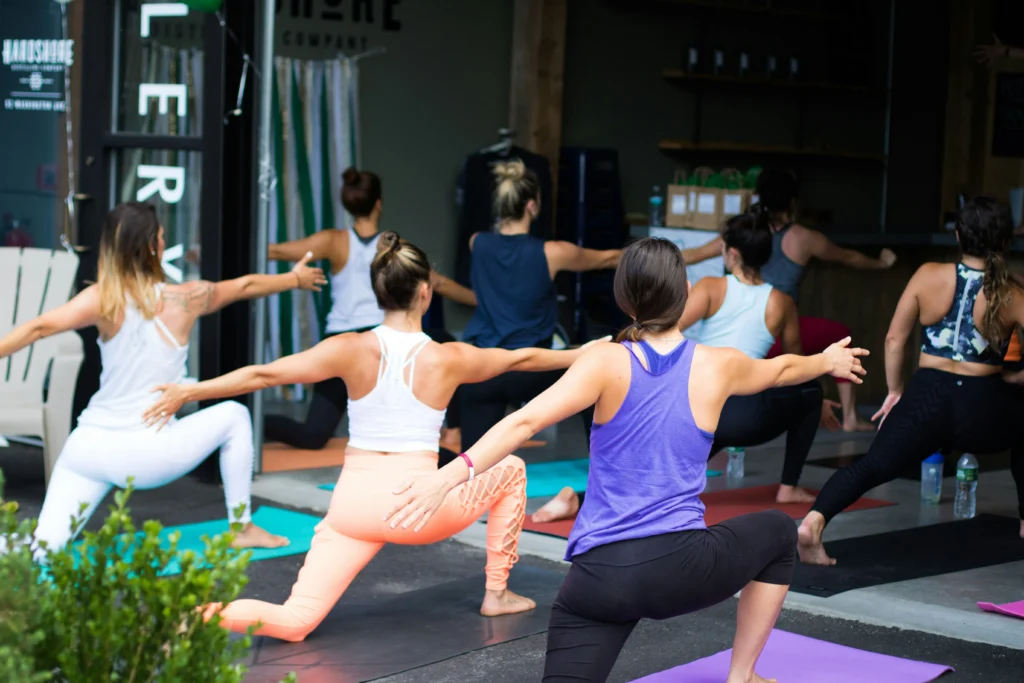
A distinctive feature of Ashtanga Yoga is the Mysore Style, a self-led approach to practice within a communal setting. Named after the city of Mysore, India, where Pattabhi Jois taught, this style emphasizes individual progress under the guidance of a knowledgeable teacher.
The Dynamics of a Mysore Room
In a Mysore-style class, practitioners of all levels work through the sequence at their own pace, with teachers providing personalized adjustments and advice. This format fosters a deeply personal practice while benefiting from the collective energy and motivation of a group setting.
Building a Supportive Yoga Community
The communal aspect of Mysore Style practice creates a supportive environment, where more experienced practitioners inspire beginners, and the shared journey fosters connections among individuals. This sense of community is vital for sustaining motivation and deepening the practice, as it provides both encouragement and a sense of belonging.
Learning from a Qualified Teacher
The role of the teacher in Mysore Style is crucial. They guide each student individually, offering adjustments, insights, and techniques tailored to the student’s current level, challenges, and potential. This personalized guidance accelerates learning and helps integrate the physical practice with spiritual and ethical principles, making the Ashtanga journey deeply transformative.
8. Setting Realistic Expectations and Celebrating Personal Growth
The path of Ashtanga Yoga is both challenging and rewarding, marked by physical, mental, and spiritual milestones. As beginners embark on this journey, it’s crucial to set realistic expectations, understanding that progress comes with consistent practice, patience, and perseverance.
Embracing the Journey with Patience
Ashtanga Yoga is not a quick-fix solution but a lifelong journey of self-discovery and improvement. Progress may be slow and not always linear. Embracing each practice session as an opportunity to learn and grow, rather than focusing solely on achieving specific postures, allows for a more fulfilling experience.
Celebrating Every Victory
Every step forward, no matter how small, is a victory in the Ashtanga journey. Whether it’s mastering a new posture, noticing improvements in breath control, or feeling a shift in mental clarity, each accomplishment deserves recognition. Celebrating these moments of personal growth fosters a positive attitude and motivates continued practice.
Conclusion
Ashtanga Yoga is a transformative practice that challenges and rewards in equal measure. It offers a structured path to not only physical strength and flexibility but also mental resilience and spiritual growth. By incorporating the principles of the Eight Limbs, engaging in the communal learning environment of the Mysore Style, and celebrating each step of personal growth, practitioners can experience the profound benefits of Ashtanga Yoga in all aspects of life.
As you continue or begin your Ashtanga Yoga journey, remember that the true essence of the practice lies not in perfecting each pose but in the continuous effort, dedication, and the inward journey each practice initiates. Let the Ashtanga Primary Series be your gateway to a deeper understanding of yourself and the world around you.
Yoga asana has asana practice and yoga poses called yoga chikitsa. Standing postures and standing poses whole practice helps nerve cleansing.
Start today. Practice consistently. Grow infinitely.
Are you ready to embark on this life-changing journey? Whether you’re a seasoned yogi or a curious beginner, Ashtanga Yoga welcomes you with open arms. We encourage you to lay out your mat, embrace the practice with an open heart, and witness the transformative power of Ashtanga Yoga firsthand.
Join a class, find a community, or simply begin at home. Share your experiences, challenges, and victories with us in the comments below. Your journey through Ashtanga Yoga is not just about personal growth; it’s a path to becoming a part of a global community of practitioners dedicated to bettering themselves and the world around them.
Start today. Practice consistently. Grow infinitely.
I’m glad you’re here! For more blogs about yoga, meditation, and their magnificent effects, visit:
- Meditation Tips: Natural Ways to Improve Concentration and Focus
- 10 Amazing Yoga Exercises for The Eyes That Can Sharpen Your Vision
- Beginner’s Guide: Basic Tips to Get Started With Yoga
- 3 Easy Steps to Create a Zen Yoga Room on a Budget
- Yoga on the Beach: 5 Essential Tips to Elevate Your Seaside Practice

